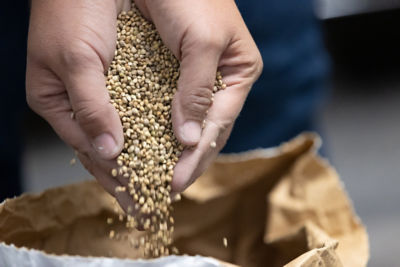Causal Agent
Ditylenchus dipsaci
Distribution
Worldwide
Symptoms
Infected young seedlings are stunted, pale and have swollen areas along the cotyledons. Leaves can develop yellowish-brown spots, can be short and thickened and stem swelling (bloating) can occur. As the disease progresses, the foliage collapses and the stems and necks of bulbs soften. The bulb scales become soft and light gray. Infected bulbs are light in weight, may be malformed or produce sprouts and double bulbs. Fungal and bacterial secondary infections are common and often give off a foul odor.
 Longitudinal section of a bulb showing infected basal plate.
Longitudinal section of a bulb showing infected basal plate.
Conditions for Development
New infections often come from nematode infested onion sets. Once the nematodes enter the seedlings they reproduce and migrate within or on the surface of plants. They can be spread by moving infested soil and debris, by rain and irrigation water and by farming equipment. Infected weeds and discarded onions often become the source of nematodes for the next crop. A soil temperature of 21°C (70°F) is optimum for nematode movement and symptom development, while free moisture favors nematode longevity and activity.
Control
To avoid introducing the nematode, check onion sets to verify they are disease free prior to planting. If the nematode is present in the soil, fumigation can give good control. Complete removal and destruction of cull piles, volunteer onions and host weeds are important for reducing this disease. Also, a four year crop rotation to non-hosts such as spinach, carrots, beets, crucifers, lettuce or grains has proven effective.



